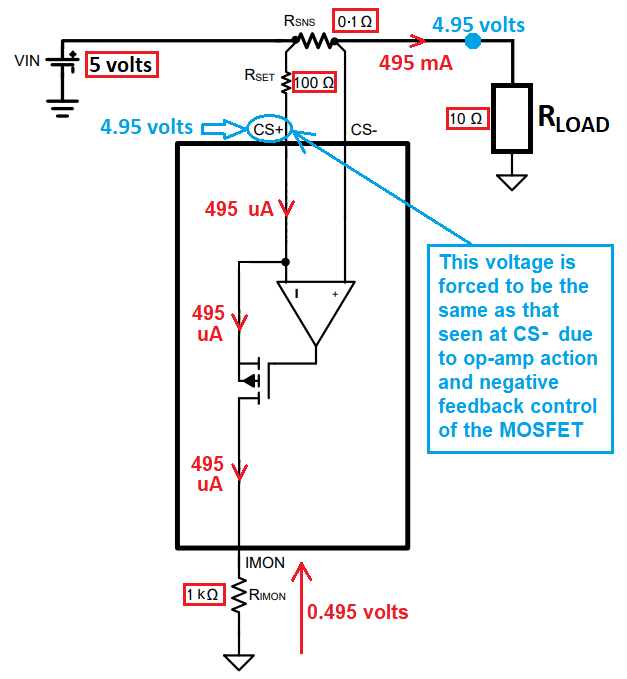Per my observations, there is no current source at the IMON terminal.
Actually there is but you didn't recognize it. You probably accept that CS- will be at a slightly lower voltage than the input side of the shunt resistor (\$R_{SNS}\$) due to load current. Does that make sense so far?
Well, in order to get the op-amp into stability (Cs- = CS+), the voltage at CS+ can be "dragged-down" to equal the voltage at CS- by activating the p-channel MOSFET and taking some current from \$R_{SET}\$, through the MOSFET and down to ground via \$R_{IMON}\$.
Does that make sense and, do you see that this all happens automatically within a negative feedback loop. Hence, the current source at IMON is the op-amp and MOSFET working together.
Of course, that current taken from the CS+ pin flows to ground through \$R_{IMON}\$ and, the voltage produced is proportional to the real load current through the shunt resistor \$R_{SNS}\$.
- Scaling refers to the current through \$R_{IMON}\$ compared to the actual current through \$R_{SNS}\$.
- The offset of the op-amp represents an error factor. Ideally it would be 0 μV but nothing ever is that good.
It might help if you concentrated on the crucial parts of the circuit that dictate performance and, put some example numbers on things: -


